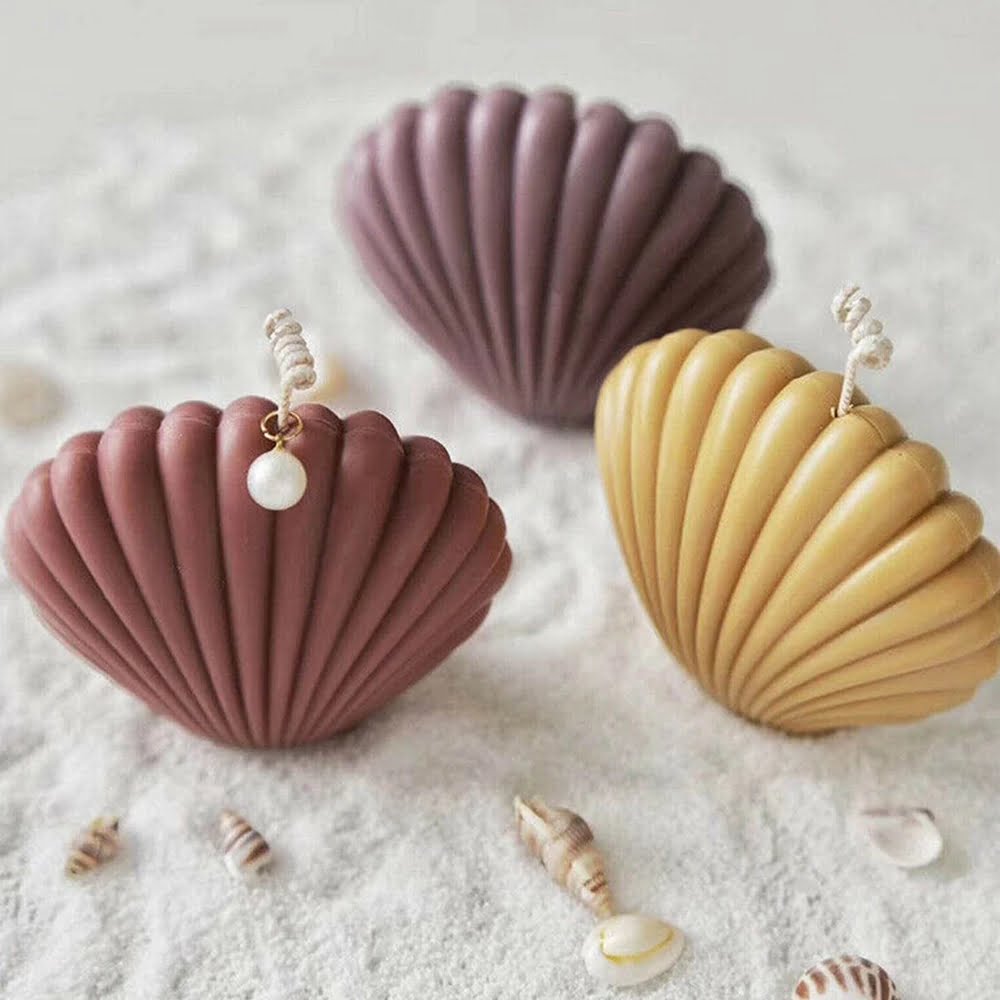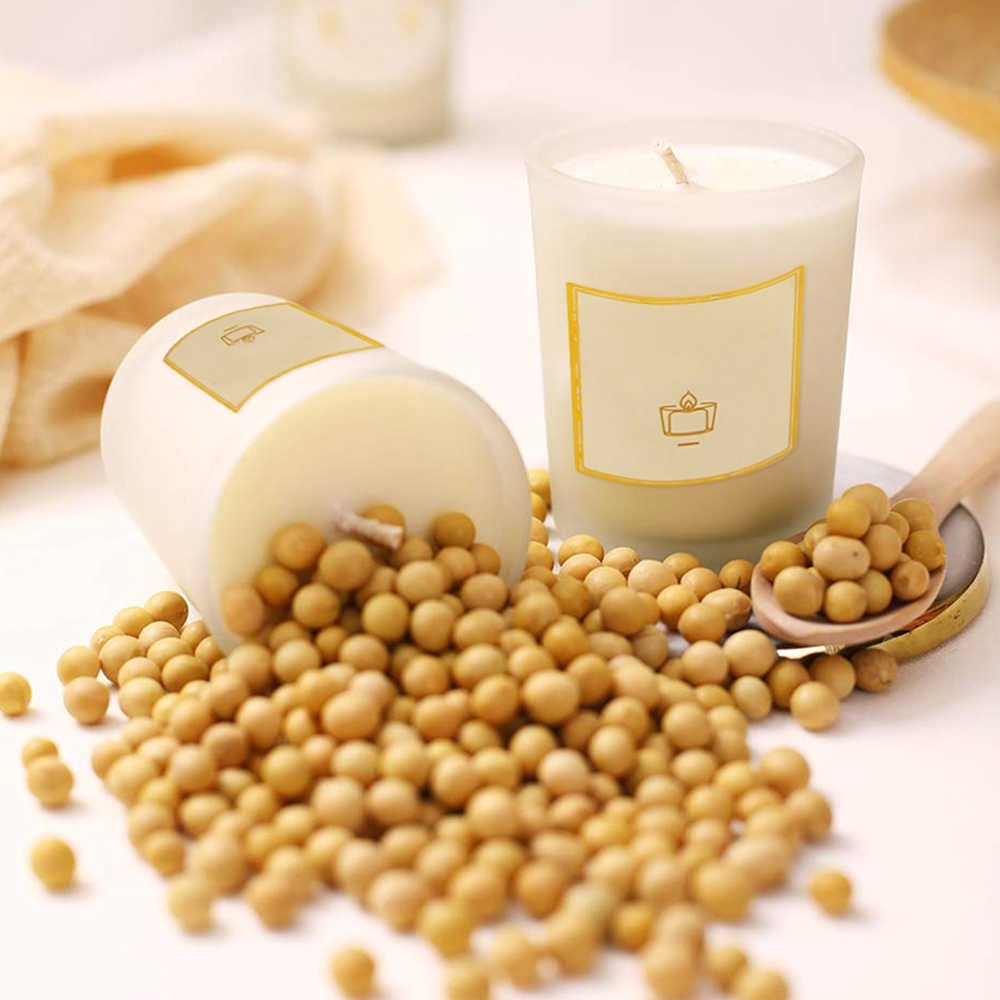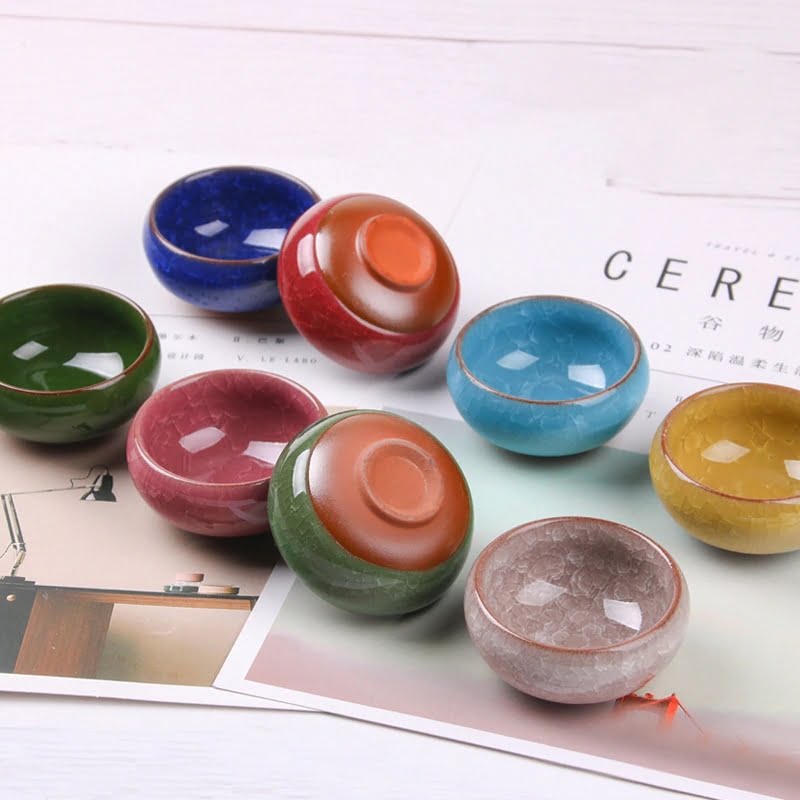Citronella candles are a must-have for outdoor lovers seeking to create a pest-free and enjoyable atmosphere. One of the essential aspects of making these candles is choosing the right wax, as it directly impacts their scent, burn time, and overall effectiveness. With numerous options available in the market, finding the best wax for making citronella candles can be a daunting task.
In this article, we will explore the different types of wax that are commonly used for making citronella candles. We will discuss their pros and cons, as well as factors to consider when choosing the ideal wax. Whether you prefer paraffin wax for its affordability or soy wax for its eco-friendliness, we will provide a comprehensive guide to help you make an informed decision.
Furthermore, we will delve into specific wax types such as beeswax and coconut wax, highlighting their unique characteristics and benefits for making citronella candles. Additionally, we will discuss blended waxes and how they can unlock the perfect formula for long-lasting citronella candles. By comparing and contrasting these various options, we aim to determine which type of wax is ultimately the best choice for creating highly effective citronella candles.
Stay tuned to learn valuable tips and tricks on successfully working with different types of wax when making citronella candles. From proper melting techniques to achieving optimal scent throw, this article aims to equip you with all the necessary information so that you can confidently select the best wax for making your own pest-free outdoor experiences even more enjoyable.
What to Look for When Choosing Wax for Citronella Candles
When it comes to making citronella candles, choosing the right wax is essential for achieving optimal results. There are several factors to consider when selecting the wax that will best suit your needs and preferences. Here are some key factors to keep in mind when choosing wax for citronella candles:
- Scent Retention: Citronella candles are primarily used for their insect-repellent properties, so it’s important to choose a wax that can effectively hold and release the scent of citronella oil. Look for waxes that have excellent scent retention capabilities, as this will ensure that your candles provide maximum protection against pests.
- Burn Time: The burn time of a candle is an important consideration, especially if you plan on using your citronella candles outdoors for extended periods. Opt for waxes that have longer burn times, as this will allow you to enjoy prolonged protection from insects without having to constantly relight or replace the candles.
- Heat Resistance: Since citronella candles are typically used outdoors, they may be exposed to higher temperatures than indoor candles. It is crucial to select a wax that has good heat resistance and can withstand warmer environments without melting or deforming easily.
- Appearance and Texture: The appearance and texture of the wax can greatly impact the overall aesthetic of your citronella candles. Consider whether you prefer a smooth and shiny finish or a more rustic, textured look. Some waxes may also come in different colors, allowing you to create visually appealing candles.
- Eco-Friendliness: If you prioritize environmentally-friendly options, choose waxes that are sustainable and renewable. Waxes such as soy wax and beeswax are popular choices among eco-conscious candle makers due to their renewable sources and biodegradability.
By considering these factors, you can make an informed decision when choosing the best wax for making your own citronella candles. Remember that each type of wax has its own set of pros and cons, so it’s important to weigh these factors against your specific needs and priorities.
The Different Types of Wax for Making Citronella Candles
When it comes to making citronella candles, choosing the right type of wax is crucial. The wax you select will determine not only the quality and performance of your candle, but also its fragrance throw and burn time. To help you make an informed decision, this comprehensive guide provides an overview of the different types of wax commonly used for making citronella candles.
1. Paraffin Wax: Paraffin wax is a popular choice for candle making due to its affordability and versatility. It has a high melting point, which means that candles made from paraffin wax tend to have a longer burn time. However, it is important to note that paraffin wax is derived from petroleum, which may not be appealing to those looking for more eco-friendly options.
2. Soy Wax: Soy wax is made from soybean oil and is hailed as a natural, renewable resource. It burns cleaner compared to paraffin wax and has a lower melting point, allowing for a longer fragrance throw. Additionally, soy wax has excellent adherence to containers and produces minimal soot when burned.
3. Beeswax: Beeswax offers a luxurious touch to citronella candles with its natural golden hue and sweet aroma. It is sustainable and biodegradable, making it an eco-friendly choice for candle enthusiasts. While beeswax candles tend to be more expensive than other types of waxes, they offer a longer burn time and emit negative ions that can help purify the air.
4. Coconut Wax: Coconut wax is derived from coconut oil and is known for its clean-burning properties. It has excellent fragrance retention and throws scent exceptionally well in citronella candles. In addition, coconut wax has a natural creamy color that enhances the aesthetic appeal of your candles.
5. Blended Waxes: Blended waxes are made by combining two or more types of wax to harness their individual benefits. For example, blending soy wax with other waxes can enhance burn time and fragrance throw while maintaining eco-friendly qualities. Experimenting with different wax combinations allows candle makers to achieve the perfect formula for long-lasting citronella candles.
As you can see, each type of wax has its own unique characteristics and advantages. Consider factors such as price, sustainability, fragrance throw, burn time, and personal preferences when choosing the best wax for your citronella candles. Don’t be afraid to experiment with different types of wax to find the perfect balance that suits your needs.
Paraffin Wax
Pros of Paraffin Wax for Citronella Candle Making
Paraffin wax is a popular choice for making citronella candles due to its affordability and accessibility. Here are some of the advantages of using paraffin wax for this purpose:
- Affordability: Paraffin wax is one of the most cost-effective options available in the market, making it a practical choice for those who want to make citronella candles on a budget. It is readily available in various stores and can be purchased in bulk quantities at a reasonable price.
- Scent Retention: Paraffin wax has excellent scent retention properties, which means that it can effectively hold and release the fragrance of citronella oil. This is crucial for citronella candles as the strong scent of citronella acts as a natural repellent against mosquitoes and other insects.
- Easy to Work With: Paraffin wax has a low melting point, which makes it easy to handle and work with when making citronella candles. It melts quickly and evenly, allowing you to pour the wax into different molds or containers without much hassle.
Cons of Paraffin Wax for Citronella Candle Making
While paraffin wax has its advantages, there are also some drawbacks that should be taken into consideration before choosing it as the wax for your citronella candles:
- Petrochemical Origin: Paraffin wax is derived from petroleum, which raises concerns among environmentally conscious individuals. The production and burning of paraffin wax may release potentially harmful by-products into the air, contributing to air pollution.
- Non-Renewable Resource: As a by-product of petroleum refining, paraffin wax is not an eco-friendly option since it relies on non-renewable fossil fuels for its production. If sustainability is important to you, you may want to consider alternative waxes such as soy or beeswax.
- Less Clean Burning: Paraffin wax tends to produce more soot and smoke compared to other types of wax, which can lead to blackened candle jars and potentially decrease air quality when burned indoors. This is less of a concern if you plan on using the citronella candles exclusively outdoors.
Despite its drawbacks, paraffin wax remains a popular choice for making citronella candles due to its affordability and effectiveness in holding fragrance. However, if environmental impact and air quality are significant considerations for you, exploring alternative wax options may be worth considering.
Soy Wax
When it comes to making citronella candles, choosing the right wax is crucial. One of the top contenders in the market is soy wax. Known for its eco-friendly qualities and excellent fragrance throw, soy wax has gained popularity among candle enthusiasts. In this section, we will explore why soy wax could be the best option for your citronella candles.
Eco-Friendly and Sustainable
One of the main reasons soy wax is favored by many candle makers is its eco-friendly nature. Soy wax is made from renewable resources, specifically soybeans, which are grown by farmers. This makes it a sustainable choice compared to petroleum-based waxes like paraffin. The production of soy wax also generates fewer greenhouse gas emissions, contributing to a cleaner environment.
Excellent Fragrance Throw
Another advantage of using soy wax for citronella candles is its ability to hold and release fragrance effectively. The natural composition of soy wax allows it to retain essential oils or fragrance oils, resulting in a strong and long-lasting scent throw when the candle is burned. This means that your citronella candles made with soy wax will not only repel mosquitoes but also fill your outdoor space with a pleasant aroma.
Burns Cleaner and Longer
Soy wax has a lower melting point compared to other waxes used for candle making. This characteristic results in candles that burn cleaner with minimal soot or smoke formation. Soy wax also has an impressive burn time, meaning your citronella candles will last longer when compared to alternatives like paraffin or beeswax.
Beeswax
Beeswax is a popular and eco-friendly alternative for citronella candle enthusiasts. As the demand for sustainable products increases, many people are turning to beeswax as a natural and renewable wax option.
One of the main advantages of using beeswax is its eco-friendliness. Beeswax is a natural byproduct of honey production by bees, making it a renewable resource. Unlike petroleum-based waxes, beeswax does not release harmful chemicals or toxins into the air when burned. This makes it a safer option for both your health and the environment.
In addition to being eco-friendly, beeswax also has excellent burning properties. It has a high melting point, which means that candles made from beeswax burn longer and have a more even flame compared to other types of wax. The natural sweet scent of beeswax adds another pleasant dimension to the aroma of citronella candles.
When working with beeswax, it’s important to note that it can be more challenging to handle than other types of wax due to its high melting point. To ensure successful candle making with beeswax, it is recommended to melt it slowly over low heat and use a double boiler or dedicated wax melting equipment.
| Wax Type | Eco-Friendliness | Burning Properties | Aroma |
|---|---|---|---|
| Paraffin Wax | Least eco-friendly | Shorter burn time | No distinct aroma |
| Soy Wax | Eco-friendly | Longer burn time | Slight soy scent |
| Beeswax | Eco-friendly | Longest burn time | Natural sweet scent |
| Coconut Wax | Eco-friendly | Moderate burn time | Neutral scent, enhances other fragrances |
Coconut Wax
When it comes to making citronella candles, choosing the right wax is crucial to ensure a long-lasting and effective pest-repelling experience. One of the top choices in this regard is coconut wax. Known for its superior scent-throw capabilities and natural properties, coconut wax has gained popularity among candle enthusiasts and outdoor lovers alike. Here are some reasons why coconut wax is considered the superior choice for both scent-throw and citronella candles.
1. Superior Scent-Throw: One of the key advantages of using coconut wax for making citronella candles is its outstanding scent-throw abilities. Coconut wax has a strong fragrance carry, meaning that it can effectively release the essential oil or fragrances used in citronella candles. This ensures that your candle will fill up your outdoor space with a pleasant aroma, while also repelling mosquitoes and other insects.
2. Natural Properties: Coconut wax is derived from coconuts, making it a natural and sustainable choice for those who prefer eco-friendly options. It is made from organic coconut oil, which contains no toxins or harmful chemicals. This makes coconut wax an ideal choice for those who prioritize environmental sustainability and want to reduce their carbon footprint.
3. Slow Burning: Another advantage of using coconut wax for citronella candles is its long burn time. Coconut wax typically has a higher melt point compared to other waxes like soy or beeswax, resulting in slower burning candles that last longer. This means you can enjoy extended hours of bug-free outdoor activities without worrying about constantly needing to relight your candle.
Blended Waxes
Blended waxes offer a unique opportunity for candle makers to create the perfect formula for long-lasting citronella candles. By combining different types of wax, it is possible to achieve the desired qualities and characteristics necessary for an effective citronella candle. Blending waxes allows for customization and experimentation, resulting in a product that meets specific needs and preferences.
Types of Wax Blends
When it comes to creating blended waxes for citronella candles, there are several options to consider. One popular choice is combining paraffin wax with soy wax. This blend offers the advantages of both types of wax, such as the strong scent throw of paraffin and the eco-friendly properties of soy. Another option is mixing paraffin wax with beeswax, which can enhance the natural elements of citronella fragrance while providing a longer burn time.
Benefits of Blended Waxes
Blended waxes bring together the best qualities of different wax types to create a superior product. One key benefit is improved performance. By blending different waxes, candle makers can address issues such as uneven burning or poor scent diffusion commonly associated with single-wax candles. Blended waxes also offer enhanced scent throw, meaning that the fragrance from the citronella oil will be better distributed in the surrounding area.
Additionally, blended waxes can help optimize burn time. By experimenting with different ratios and combinations, candle makers can achieve extended burn times without compromising on scent strength or quality. This is particularly important for citronella candles meant for outdoor use, where endurance is crucial in warding off pesky insects during long evenings spent outside.
Tips for Working with Blended Waxes
When working with blended waxes, it is essential to consider several factors to ensure successful candle making. First and foremost, understanding how different waxes behave and their respective melting points is crucial. This knowledge will help candle makers create a compatible blend that melts evenly and has a consistent texture.
It is also important to test different ratios and combinations of waxes before settling on the final blend. Experimenting with small batches and making note of the results can help identify the perfect formula for long-lasting citronella candles. Finally, it is essential to follow proper safety measures when working with any type of wax, such as using a double boiler or temperature-controlled melting equipment to avoid accidents.
By unlocking the potential of blended waxes, candle makers can create citronella candles that deliver excellent performance in terms of scent throw, burn time, and overall effectiveness. Blending different waxes allows for customization and fine-tuning to meet specific needs and preferences. With careful experimentation and testing, finding the perfect formula for long-lasting citronella candles becomes an exciting journey that will result in pest-free outdoor experiences.
Comparing and Contrasting Wax Types
When it comes to making citronella candles, choosing the right wax is crucial for achieving the best results. There are several different types of wax available, each with its own unique qualities and characteristics. In this section, we will compare and contrast the various wax types to determine which is the best option for making citronella candles.
One popular choice for citronella candle making is paraffin wax. Paraffin wax is widely available and relatively inexpensive, making it a popular option for beginners. It has a high melting point, which allows the candle to burn slowly and evenly. However, one drawback of paraffin wax is that it is derived from petroleum, which some people may have environmental concerns about.
Soy wax is another option worth considering when making citronella candles. Soy wax is made from soybean oil and is considered to be more eco-friendly than paraffin wax. It has a lower melting point, which means that soy candles tend to have a shorter burn time compared to those made with paraffin wax. However, soy candles often have a cleaner burn with less soot and produce a stronger scent throw.
Beeswax is a natural and sustainable alternative for those who prioritize eco-friendliness in their candle-making process. Beeswax has a naturally sweet fragrance that pairs well with citronella oil. It also burns longer than most other waxes and produces minimal soot when burned properly. However, beeswax can be more expensive compared to other types of wax.
Lastly, coconut wax has gained popularity in recent years due to its excellent scent throw properties. Coconut wax gives off a strong and long-lasting fragrance when paired with citronella oil, ensuring that pesky insects stay away during outdoor gatherings. It also has a low melting point and burns cleanly, producing little to no soot.
Tips and Tricks for Successfully Working with Wax for Citronella Candles
Working with wax for citronella candles can be a fun and rewarding experience. However, it does require some knowledge and skill to ensure successful candle making. Here are some tips and tricks to help you work with wax effectively and create the best citronella candles possible.
1. Use a double boiler: When melting the wax, it is important to use a double boiler instead of direct heat. This will prevent the wax from overheating and potentially catching fire. Fill the bottom pot with water and place your wax in the top pot or heat-safe container. Heat gently until completely melted.
2. Add citronella essential oil at the right temperature: Citronella oil is the key ingredient in citronella candles as it repels mosquitoes and other insects. It is important to add the essential oil to the melted wax at around 170°F (77°C). Adding essential oils when the wax is too hot can cause them to evaporate quickly, resulting in weak scent throw.
3. Use appropriate wick size: The size of the wick used in your candle will affect how evenly it burns and how well it throws scent. It is important to choose a wick that is appropriate for the diameter of your candle jar or mold. Too small of a wick may not burn properly, while too large of a wick can result in excessive smoke and soot.
4. Consider using additives: Depending on the type of wax you choose, you may need to use additives such as stearic acid or vybar to enhance fragrance retention, improve color saturation, or increase hardness. These additives can help optimize your citronella candles for better performance.
5.Store finished candles properly: Once your citronella candles have cooled and solidified, it is important to store them properly to maintain their quality. Keep them away from direct sunlight or heat sources as this can cause melting or discoloration. For maximum shelf life, store them in a cool, dark place in an airtight container.
By following these tips and tricks, you can ensure that your experience with working wax for citronella candles is a success. Experiment with different techniques and enjoy the process of creating beautiful and effective citronella candles to enhance your outdoor experiences.
Conclusion
In conclusion, choosing the best wax for making citronella candles is crucial in order to enjoy pest-free outdoor experiences. By considering factors such as burn time, scent-throw, and eco-friendliness, you can make an informed decision on which wax type to use for your citronella candles.
While paraffin wax may be a popular choice due to its affordability and wide availability, it does have some drawbacks such as potential harmful emissions. Soy wax, on the other hand, offers a clean and slow burn with minimal soot production, making it a great option for those who prioritize eco-friendliness. Beeswax is another excellent alternative that not only provides a long burn time but also emits a lovely natural fragrance.
If you’re looking for maximum scent-throw, coconut wax is the superior choice. Its ability to hold and release fragrances makes it perfect for citronella candles that need to effectively repel pests. For those who seek the perfect balance of qualities from various waxes, blended waxes offer a customizable option.
In conclusion, there isn’t one definitive “best” wax for making citronella candles. It ultimately depends on your specific preferences and priorities. By considering factors such as burn time, scent-throw, eco-friendliness, and budget, you can choose the wax that best suits your needs and enjoy pest-free outdoor experiences with your citronella candles.

Welcome to my candle making blog! In this blog, I will be sharing my tips and tricks for making candles. I will also be sharing some of my favorite recipes.





